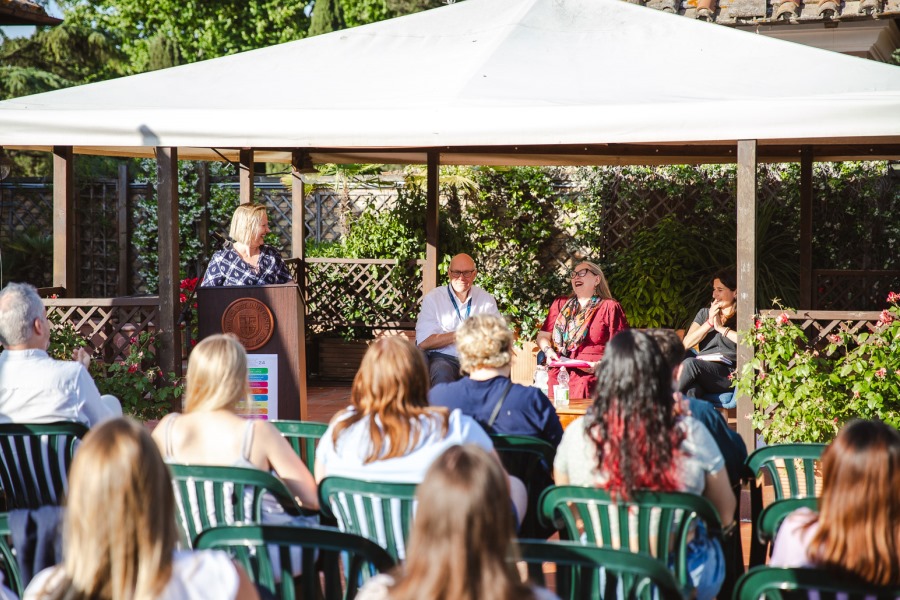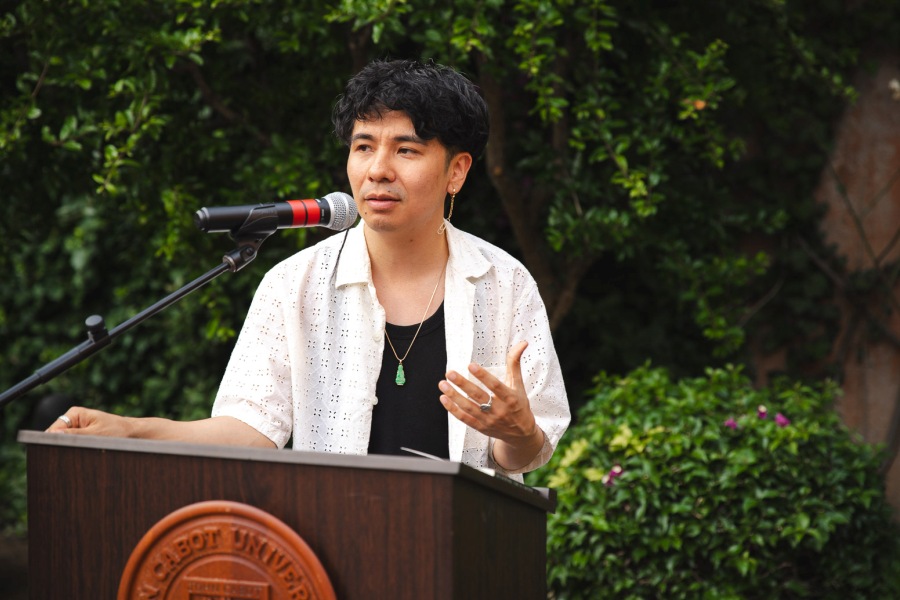Plastic’s Republic: Barbie's Impact on Female Beauty
Perfected by Japanese finesse, I am mass production with breasts. Giovanna Riccio (Always Barbie)
John Cabot University’s Department of English Language and Literature and the JCU Institute for Creative Writing and Literary Translation welcomed author and poet Giovanna Riccio to present her latest book of poems, Plastic’s Republic – Featuring the Barbie Suite (Guernica Editions, 2019). Riccio’s book provides an analysis of Barbie‘s impact on female beauty and explains how it has influenced plastic surgery’s popularity.
Influences and “dollification”
The title of Riccio’s book is inspired by Plato’s Republic. Plastic’s Republic utilizes Plato’s Allegory of the Cave and holds that Barbie as representation is also imitation, an instrument for fantasies. She cultivates the imagination and leads people away from reason, knowledge, and wisdom.
Created in 1959 by Ruth Handler for the American toy company Mattel, Inc., the ‘fashion doll’ Barbie “offered an alternative role to that of wife and mother” by promoting the idea of financially independent women pursuing their career. Barbie was single, had all kinds of different jobs, and invested in real estate. Handler got the inspiration to create Barbie from a German doll called Bild Lilli, for which Mattel later bought the copyright. Barbie was named Barbara Millicent Roberts, after Handler’s daughter. Years later, Barbie was given a boyfriend named Ken, and other friends and family members.
Plastic is essential for Barbie, because as Riccio explained, “her substance is her essence.” Barbie has influenced some people to embrace plastic surgery “to embody dollification,” said Riccio. With her plastic looks, Barbie has idealized femininity. Some felt the need to imitate the look of these fashion dolls, and Riccio gave the example of several men who attempted to look like Barbie’s boyfriend Ken by undergoing numerous plastic surgeries.
Barbie’s uniqueness
Mattel’s intention to dominate the doll market was successful, but starting in 2012, Barbie’s sales plummeted. The company implemented various strategies to recover, one of which was to make Barbie more diverse. In 2016, Mattell’s ‘Project Dawn’ launched Barbie dolls with four different body types. Curvy, tall, and petite figures started being produced along with the original Barbie doll. According to Riccio, Barbie is still the most popular doll worldwide, with a recognition factor of 98%.
In his 1936 essay The Work of Art in the Age of Mechanical Reproduction, German philosopher Walter Benjamin (1892-1940) argues that the mechanical reproduction of a work of art deprives it of its aura, the artifact’s essence or uniqueness. In Plastic’s Republic, Riccio holds that despite being mass-produced and distributed, Barbie “retained her own aura.”
Author and poet Giovanna Riccio graduated with a degree in Philosophy from the University of Toronto. She was born in Italy and raised in Canada, where she emigrated with her family when she was six years old. Riccio is the author of Vittorio, Strong Bread and Plastic’s Republic. Her poems and other writings have appeared in numerous anthologies, magazines, newspapers, and journals, and have been translated into Italian, French, Spanish, and Romanian.






